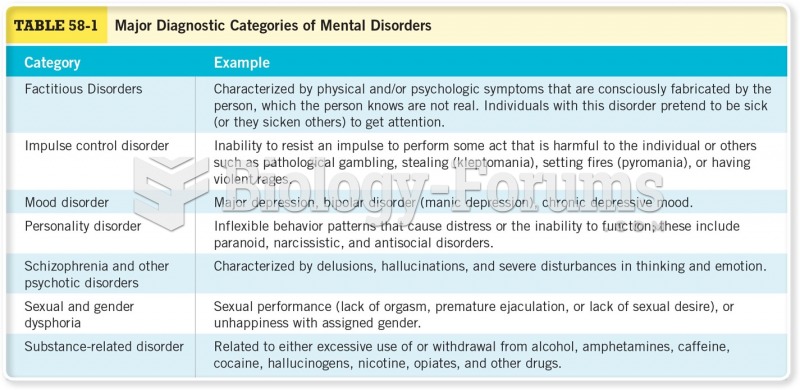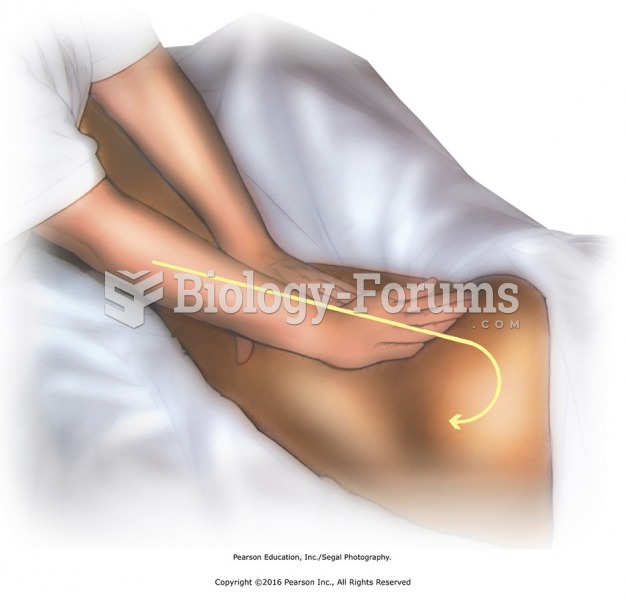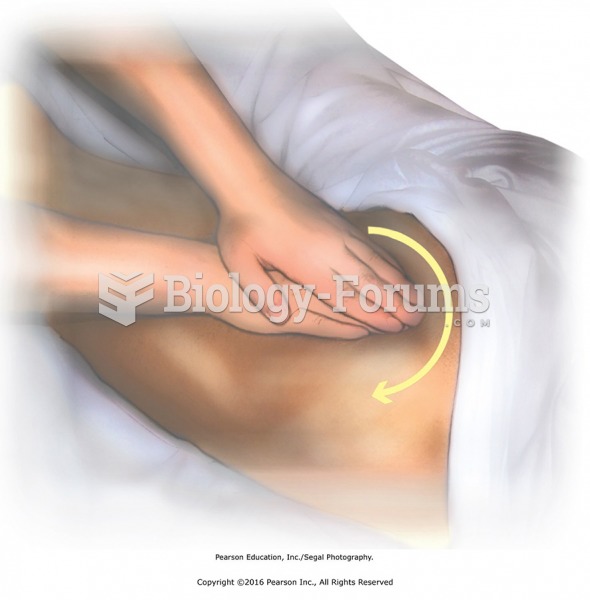|
|
|
If all the neurons in the human body were lined up, they would stretch more than 600 miles.
Nearly 31 million adults in America have a total cholesterol level that is more than 240 mg per dL.
Approximately one in four people diagnosed with diabetes will develop foot problems. Of these, about one-third will require lower extremity amputation.
The use of salicylates dates back 2,500 years to Hippocrates's recommendation of willow bark (from which a salicylate is derived) as an aid to the pains of childbirth. However, overdosage of salicylates can harm body fluids, electrolytes, the CNS, the GI tract, the ears, the lungs, the blood, the liver, and the kidneys and cause coma or death.
Interferon was scarce and expensive until 1980, when the interferon gene was inserted into bacteria using recombinant DNA technology, allowing for mass cultivation and purification from bacterial cultures.
 Apply effleurage over eyelids. Using very light pressure, stroke the closed eyelids with your thumbs ...
Apply effleurage over eyelids. Using very light pressure, stroke the closed eyelids with your thumbs ...
 Using the same hand position as in Step 3, apply circular friction along paraspinal muscles of the ...
Using the same hand position as in Step 3, apply circular friction along paraspinal muscles of the ...
 Apply direct pressure to points on low back. Press into paraspinal muscles from the side. Move spot ...
Apply direct pressure to points on low back. Press into paraspinal muscles from the side. Move spot ...




